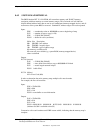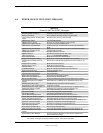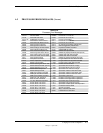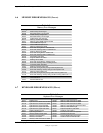
Chapter 8 BIOS ROM
Compaq Deskpro EN Series of Personal Computers
Desktop and Minitower Form Factors
Third Edition - September 1998
8-22
8.6.3 APM SUPPORT
Advanced Power Management (APM) BIOS support provides interaction between the BIOS
ROM and the operating system (OS). The BIOS advises the OS when a power state transition
should occur. The OS then notifies the appropriate driver(s) and reports back to the BIOS.
For maximum energy-conservation benefit, APM functionality should be implemented using the
following three layers:
♦ BIOS layer (APM BIOS (ver. 1.2, 1.1, 1.0))
♦ Operating system (OS) layer (APM driver)
♦ Application layer (APM-aware application or device driver)
The process starts with the OS or driver making a connection with the BIOS through an APM
BIOS call. In a DOS environment POWER.EXE makes a Real mode connection. In Windows 3.1
and in Windows 95, a 32-bit connection is made. Currently Windows NT does not make an APM
connection.
With power management enabled, inactivity timers are monitored. When an inactivity timer
times out, an SMI is sent to the microprocessor to invoke the SMI handler. The SMI handler
works with the APM driver and APM BIOS to take appropriate action based on which inactivity
timer timed out.
Two I/O ports are used for APM communication with the SMI handler:
Port Address
Name
0B2h APM Control
0B3h APM Status
Three power states are defined under power management:
On
- The computer is running, all subsystems are on and drawing full power. Any activity in the
following subsystems will reset the activity timer, which has a default setting of 15 minutes
before Standby entered:
a. Keyboard
b. Mouse
c. Serial port
d. Diskette drive
e. Hard drive


















